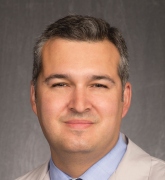Bone density of first and second segments of normal and dysmorphic sacra. Journal Article
Local Library Link: Find It @ Loyola
| Authors: | Radley, JM; Hill, BW; Nicolaou, DA; Huebner, SB; Napier, KB; Salazar, DH |
| Article Title: | Bone density of first and second segments of normal and dysmorphic sacra. |
| Abstract: | BACKGROUND: Iliosacral screw fixation is safe and effective but can be complicated by loss of fixation, particularly in patients with osteopenic bone. Sacral morphology dictates where iliosacral screws may be placed when stabilizing pelvic ring injuries. In dysmorphic sacra, the safe osseous corridor of the upper sacral segment (S1) is smaller and lacks a transsacral corridor, increasing the need for fixation in the second sacral segment (S2). Previous evidence suggests that S2 is less dense than S1. The aim of this cross-sectional study is to further evaluate bone mineral density (BMD) of the S1 and S2 iliosacral osseous pathways through morphology stratification into normal and dysmorphic sacra. MATERIALS AND METHODS: Pelvic computed tomography scans of 50 consecutive trauma patients, aged 18 to 50 years, from a level 1 trauma center were analyzed prospectively. Five radiographic features (upper sacral segment not recessed in the pelvis, mammillary bodies, acute alar slope, residual S1 disk, and misshapen sacral foramen) were used to identify dysmorphic characteristics, and sacra with four or five features were classified as dysmorphic. Hounsfield unit values were used to estimate the regional BMD of S1 and S2. Student's t-test was utilized to compare the mean values at each segment, with statistical significance being set at p?0.05. No change in clinical management occurred as a result of inclusion in this study. RESULTS: A statistical difference in BMD was appreciated between S1 and S2 in both normal and dysmorphic sacra (p?0.0001), with 28.4% lower density in S2 than S1. Further, S1 in dysmorphic sacra tended to be 4% less dense than S1 in normal sacra (p?=?0.047). No difference in density was appreciated at S2 based on morphology. CONCLUSIONS: Our results would indicate that, based on BMD alone, fixation should be maximized in S1 prior to fixation in S2. In cases where S2 fixation is required, we recommend that transsacral fixation should be strongly considered if possible to bypass the S2 body and achieve fixation in the cortical bone of the ilium and sacrum. LEVEL OF EVIDENCE: Level III. |
| Journal Title: | Journal of orthopaedics and traumatology : official journal of the Italian Society of Orthopaedics and Traumatology |
| ISSN: | 1590-9999; 1590-9921 |
| Publisher: | Unknown |
| Date Published: | 2020 |
LUC Authors
-
 42
42Salazar
Related LUC Article
